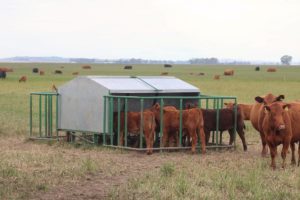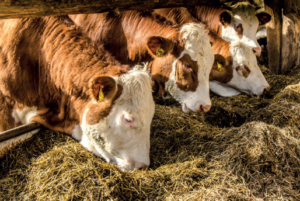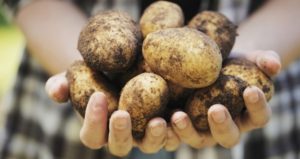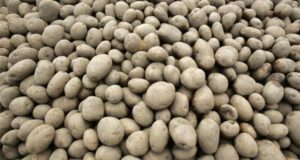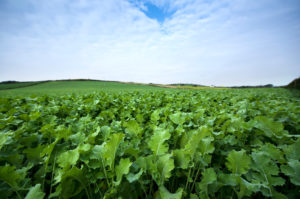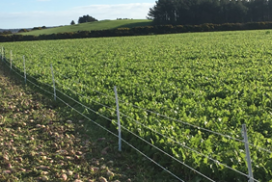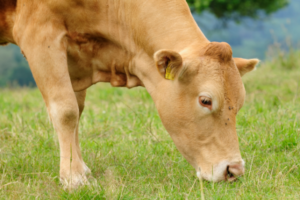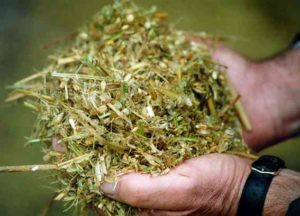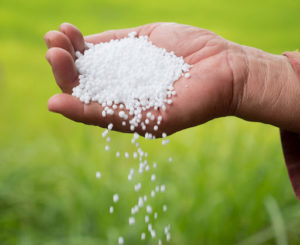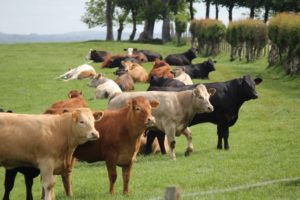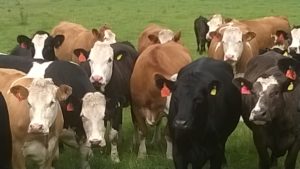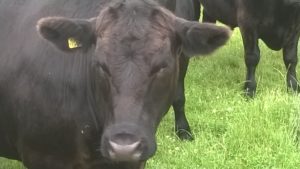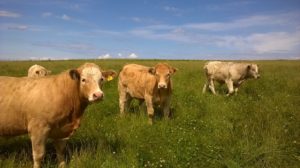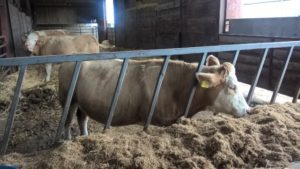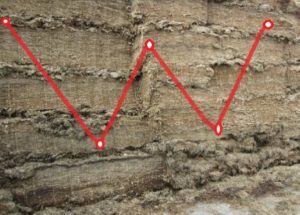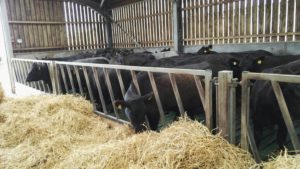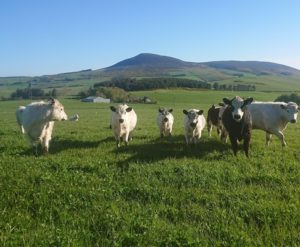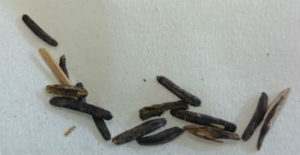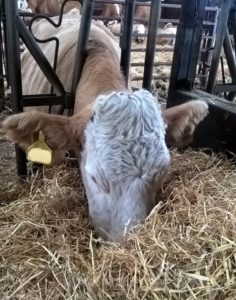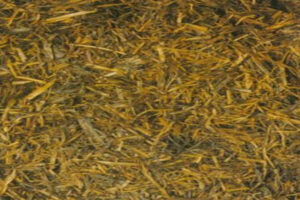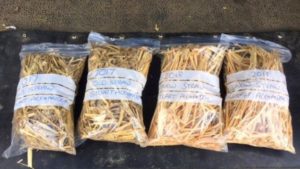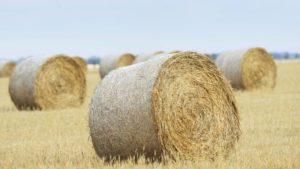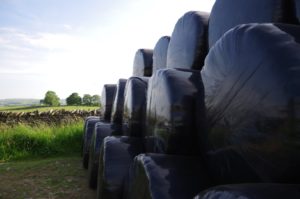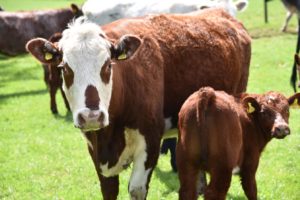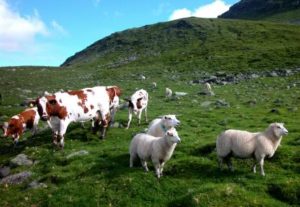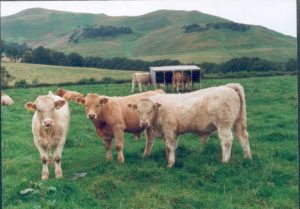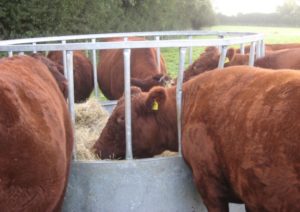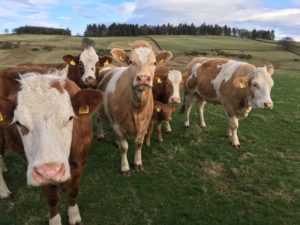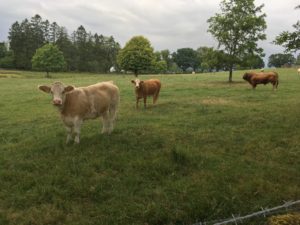Cattle Nutrition
Creep Feeding Spring Born Suckled Calves
Decisions if/when to creep feed will depend on several factors such as cow condition/milk, grass quality in front of cows and calves and what the calves are destined for. It is well established that the two main reasons for creep feeding are to make the most of conversion of feed to meat at this age and to get calves used to feed and help with the transition to weaning. Read more >>
Feeding Pre-Calving Minerals
An important factor in the pre-calving period is to ensure the cow is getting adequate minerals in her diet. Mineral levels in UK silages are variable and are influenced by a number of different factors such as soil types, cutting date, fertiliser rate and sward mix. It is advised to have your own silage analysed and work with your adviser/nutritionist to identify any shortfalls/ excess to requirements. Read more>>
Ensiling Potatoes and Grass Silage
Ensiling potatoes and grass is a well tried, tested and common procedure that works extremely well. The potatoes should be cleaned of soil as much as possible as dirt and soil will cause spoilage in the silage. Read more>>
Using Potatoes For Finishing Cattle
As with any finishing ration it is important to balance the ration appropriately for energy, protein and enough long fibre. Potatoes are very similar in nutritional composition to barley; except they are around 20% dry matter compared to dried barley at around 86% dry matter. Read more>>
Forage Crop Supplementation - Balancing Requirements
Forage crops are good high energy and protein feeds. However, depending on the type of forage crop and the livestock’s requirements the protein content may not be sufficient. Read more>>
Forage Crop - Mineral Supplementation
Forage crops are good high energy and protein feeds; however, minerals (particularly trace elements) are low in forage crops. Therefore, mineral supplementation is advised where forage crops make up a large proportion of the animal’s ration. The silage/hay fed alongside forage crops will provide some additional minerals however, forage crops are low in most of the trace elements. Read more>>
Magnesium Supplementation Of Suckler Cows, Are You Covered?
As turnout approaches, now is a good time to reassess your mineral supplementation strategy for grass staggers prevention in the suckler herd. Whilst access to spring grass is one of the key risk factors for lactating cows, with the high passage rate of lush, wet grass through the digestive tract reducing magnesium absorption, there are several other factors to consider. Read more>>
Using A Wholecrop Cereal To Top Up Forage Supplies
If you think you may be short of forage for the coming winter cutting and preserving a standing cereal crop to produce wholecrop may be worth considering. It is a good bulk feed and can replace silage if necessary (may need additional protein depending on the stock to be fed) and it is ideal if you have undersown cereals and will give an earlier bite in the field or free up the field for early sowing of a catch crop. Read more>>
Nutritional Safety For Feeding Urea
The shortage of protein feeds in 2020 such as distiller’s grains and high cost of supplementing protein may make urea seem an attractive alternative for supplementing rations. Urea has been successfully used in rations for over 70 years, however when using urea some caution is required. Read more>>
Is Mineral Supplementation Necessary For Cattle At Grass?
Many farmers do, many do not, and some may bolus to provide certain trace elements. Unless there is a known deficiency on the farm or clinical signs then it is very difficult to know whether a specific mineral deficiency is impacting on growth performance in cattle or fertility in replacement heifers. Read more>>
Summer Finishing From Grass
Although good grazing management is key to achieving good growth rates for finishing cattle, it is also important to consider carefully what type of cattle are put to grass to get the best from them. All cattle will perform well on a well-managed grazing system, however some will flesh more easily on grass than others and some will grow more frame. Read more>>
Growing & Finishing Cattle At Grass
Turning cattle out to grass is a welcome break from the winter feeding routine and frees up time for other activities on the farm, it is also a great opportunity to make more from our grass – the cheapest feed we can get if it is managed well. Read more>>
Managing Cows To Avoid Grass Staggers
Magnesium Tetany (also known as ‘Grass Staggers’) is caused by a lack of magnesium. Magnesium is not stored in the body and a daily dietary intake is required. Cows in early lactation, older cows and cows under nutritional stress are most at most at risk. There can be various reasons why cows fall dangerously low in magnesium: Read more>>
Assessing Your Winter Growing Ration
The most important factor of achieving high liveweight gain is ensuring a high energy density of the ration. Another important factor is protein and the level of concentrate supplementation will depend on the basal forage of the ration. Therefore, it is vital to analyse the forage, this is not an expensive process and in the long run will save you money by improving animal performance, if it is used to formulate rations accordingly. Read more>>
Silage Sampling - Taking A Representative Sample
Poor sampling technique is one of the main causes of unreliable silage analysis results. It is important to take a representative sample of the silage which will be fed to stock. This ensures the results are reliable and accurate, in order to ration livestock as effectively as possible. Read more>>
Straw Diets For Suckler Cows - Check Your Ration
There have been recent reports of a number of rumen impaction cases related to beef sucklers fed on straw-based rations. These cases have been particularly prevalent in areas where there is a shortage of alternative higher quality forages such as silage or hay. Straw is low in energy and protein and very deficient in minerals. Straw is around 6.6MJ ME/kg DM and 3.5% CP in the dry matter. For good rumen function at least 9% crude protein is required. Read more>>
Avoiding Listeria
Listeria spp. are ubiquitous environmental bacteria and are also found in the faeces of normal animals. They will multiply in silage following entry of air and when pH is ≥ 5.5. Spoiled silage is traditionally blamed for most outbreaks of listeriosis but in some cases has not always been fed. A wet winter would leave muddy conditions which could increase disease risk through ingestion of soil. Read more>>
Ammonia Treated Straw Less Effective This Winter?
In January 2019 we were getting calls regarding spring calving cows on ammonia treated straw. The symptoms reported are low appetites and very solid dung like bricks. This is the classical signs of rumen compaction due to the rumen microbes having insufficient energy and protein to reproduce. The result is straw remains undigested in the rumen and gradually builds up until eventually the animal dies. Unfortunately as the animal is effectively “stuffed” it does not appear to be hungry. Read more>>
Ergot Poisoning Identified
In December 2018 there were reports from a North-East Scotland suckler cow herd of ergot poisoning, with some cattle having to be put down. Although usually associated with contaminated grain, the source of ergot in this case was from late cut baled grass silage, other reports have found ergot in grass cut for silage from arable field margins. Silage associated ergot toxicity has been described previously in the UK. Risk factors include late cut silage (as seed heads develop) and wet weather. Read more>>
Loose Dung In Stock
With cattle now housed some farmers are reporting stock with loose dung. One of the reasons for this could be due to the high quality silages that have been made this year which are providing relatively little long fibre. Insufficient fibre in a ration can cause stock to have loose dung. By offering straw (no need to replace silage with straw simply have straw available to stock in a ring feeder) you will increase the roughage and the long fibre of the diet and firm up the dung. Read more>>
Wholecrop Rations For Cattle
Summer 2018 saw an increased interest in the production of wholecrop cereal silage for feeding to livestock as an alternative forage. The majority is ensiled and fermented at dry matter (DM) concentrations ranging from 300 to 450 g/kg. It can also be ensiled at high DM concentrations ranging from 700 to 800 g/kg, where it is harvested through a forage harvester fitted with a grain processor and ensiled with a urea- based additive. Read more>>
Dry Silage and Clamp Management
The dry summer this year has led to an increase overall in the average dry matter (DM) of silages received into the SAC lab. In the pit, high DM silages are more susceptible to heating and spoilage and are more likely to contain mycotoxins (for more info: https://www.fas.scot/news/mycotoxin-risk-with-high-dry-matter-silages/). If the pH is higher than 4.4, this increases the risk of spoilage which can occur very quickly. Read more>>
Beware Of Nitrate Poisoning Risk
In normal conditions, plants do not absorb so much nitrate as to cause problems in stock. However, warm overcast weather after a long dry spell, can lead to an increase of nitrogen absorption, particularly on leafy forage brassicas. A nitrate concentration above 2 g/kgDM is considered a risk. There may be a higher risk this year due to the growing conditions. Read more>>
Potential Risk From High Potassium Straw
The drought conditions of summer 2018 has led to some unusually pink tinged straw at harvest, as a result of high potassium contained within the plant. This has been particularly evident in the south east of England but has also been reported in the Scottish Borders. The concern is that the high potassium could be a risk factor for milk fever and other related conditions in dry dairy cows and spring calving suckler cows, where significant levels of straw are included in the diet. Read more>>
Cheaper Straw?
Currently (this article was written in 2018) straw prices have eased by with weather conditions deteriorating are likely to increase in the next few months. Would it be sensible to purchase straw if possible now to have sufficient to dilute limited silage stocks to keep cows full or even to winter some store animals on a straw and concentrate diet rather than sell them at lower prices than last year? Read more>>
Big Bale Kale
In addition to grazing or cut-and-cart (being a more traditional method), kale can make an effective silage crop, both in clamps but more frequently into big bales. Despite its low dry matter, providing a reasonable wilt, big bale kale silage is an adequate conservation method. Read more>>
Feeding Livestock In Hot Weather?
As summer progresses the quantity and quality of grass declines and due to the very low soil moisture levels grass growth has fallen considerably. Sward heights should therefore be checked regularly to ensure adequate feed. On a rotational grazing system, fields should be grazed at 10 cm and higher residuals should be left (6 cm in Aug/Sept) for better grass recovery. Read more>>
Dip In Summer Growth
Grass is a great asset for feeding and when managed well can produce high liveweight gains from cattle. However, as we move through summer it is important to remember that grass will start to become more fibrous, therefore reducing the metabolisable energy (ME), potentially to around 11 MJ/kg DM. Read more>>
Type Of Feed To Use In Calf Creep Feeders
In summer, calves will be consuming milk and grass so on average a creep feed with 14-16% crude protein (as fed) and 12.5MJ metabolisable energy/kg DM should be adequate. As creep feed is usually made available from a feeder with a hopper it is effectively available ad lib so care is required to prevent rumen acidosis. Initially the creep feed should be diluted with a digestible fibre source such as sugar beet pulp or soya hulls, which can gradually be reduced. Read more>>
When To Start Creep Feeding Spring Born Suckled Calves
Timing will depend on calf age, growth potential of calves and grass availability. Normally creep feeding would start 6-10 weeks prior to weaning but bulls to be finished on ad-lib cereal diets should start being creep fed earlier, around 12 weeks before weaning. Read more>>
Why To Creep Feed Spring Born Suckler Calves?
When a calf is 4 months of age half of its nutritional requirements should be met by forage and concentrates rather than milk. Supplying creep feed before weaning can help smooth the transition from pre- to post-weaning and the extra source of nutrients can compensate for the reduction in milk yield as lactation progresses. Read more>>
Supplementing Beef Cattle At Grass
As summer progresses the quantity and nutritional quality of grass declines. This year, grass growth has fallen off quite considerably as soils run out of moisture. In spring and early summer there was sufficient good quality grass for animal production and for conservation as silage or hay. By now and into early autumn, animal growth rate will be declining on grass alone. Read more>>
Storing Potatoes With Draff/Brewers Grains
Potatoes are currently quite cheap (June 2018), quotes around £13-19 delivered. If you are able to get draff this summer then a good storage option is ensiling potatoes with draff. An alternative would be to use brewers grains. Potatoes and draff can be safely ensiled together at a ratio of 2 draff:1 clean potatoes. This produces a useful feed with around 11.8 MJ ME/kg DM and 18% CP in the DM.
Thin Cows and Calves at Grass
Supplementary feed is required for thin cows with their calves turned out where there is little grass available. To begin cycling, cows must regain condition and be in a positive energy balance. The leaner the cow the faster she needs to regain condition to begin cycling. It is really important to especially look after cows rearing twins, young cows and lean cows. Read more>>
Thin Cows Still To Calve
If cows are thin (condition score 1-2) right now at calving, take action to prevent calf and or/cow losses. If you are concerned about the condition/feeding of your cows please seek advice from your adviser, vet or nutritionist before it is too late – we are here to help. Read more>>
Magnesium Supplementation For Cows
Magnesium is not stored and a daily dietary intake is required and if output exceeds intake then cows are at risk of staggers. Lactating spring calvers are most at risk due to the demands of milk production. Lush, fast growing grass doesn’t have as much magnesium in it has a high rate of passage so less time for absorption. Target intake is around 25-30g of magnesium/cow/day or 2.5g/kg of dry matter intake. Read more>>
Sign up to the FAS newsletter
Receive updates on news, events and publications from Scotland’s Farm Advisory Service

